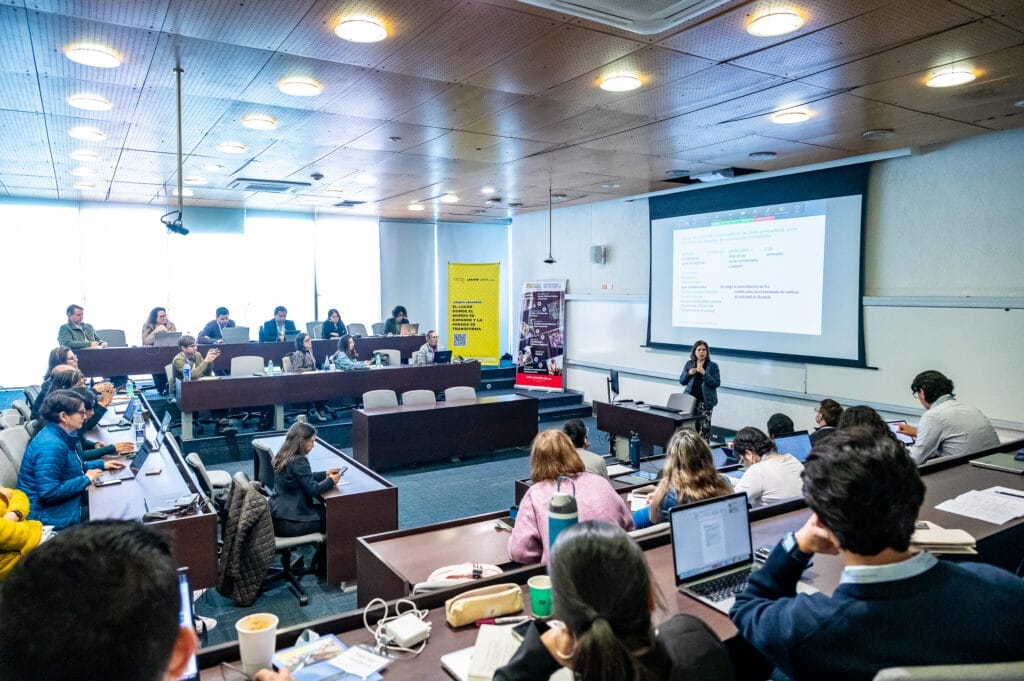Building Vibrant Communities: Municipal Government Workers Get a Boost


Participants in the Lincoln Vibrant Communities summit held in Denver in October 2025. Credit: Anthony Flint.
By Anthony Flint, November 4, 2025
It’s a tough time to be working in government right now—long hours, modest pay, and lots of tumult in the body politic.
While this is especially true at the moment for employees in the federal government, a new program offered by Claremont Lincoln University and the Lincoln Institute of Land Policy aims to give public employees in municipal government a boost.
Over the last year, 150 planners, community development specialists, and other professionals in municipal government have participated in the Lincoln Vibrant Communities fellowship, a 24-week curriculum combining in-person and online education, expert coaching, and advanced leadership training.
The idea is to build capacity at the local level so those professionals can have greater impact in the communities they serve, on everything from affordable housing to greenspace preservation and revitalizing Main Streets, said Stephanie Varnon-Hughes, executive dean of academic affairs at Claremont Lincoln University.
“All of us can Google or go to seminars or read texts or access knowledge on our own, but this program is about the transformative, transferable leadership skills it takes for you to use that knowledge and use that technical experience to facilitate endeavors to bring about the change that you need in your community,” she said on the latest episode of the Land Matters podcast.
“These leadership skills can be measured and modeled and sustained. We can surround you with the abilities and the resources to change the way that you move through the world and collaborate with other people working on similar issues for long-term success,” she said.
Lincoln Vibrant Communities fellows can use the training to implement some of the ideas and policy recommendations that the Lincoln Institute has developed, like setting up a community land trust (CLT) for permanently affordable housing, said Lincoln Institute President and CEO George W. “Mac” McCarthy, who joined Varnon-Hughes on the show.
“They’re the ones who find a way to find the answers in land and to manifest those answers to actually address the challenges we care about,” he said. “It’s this cadre of community problem solvers that are now all connected and networked together all across the country.”
The support is critical right now, McCarthy said, given estimates of a shortage of a half-million government workers, and amid a flurry of retirements from veteran public employees who tend to take a lot of institutional memory with them.
The Lincoln Institute has a long tradition of supporting local government, beginning in earnest in 1974, when David C. Lincoln, son of founder John C. Lincoln, established the Lincoln Institute as a stand-alone entity emerging from the original Lincoln Foundation. The organization made its mark developing computer-assisted assessment tools to help in the administration of property tax systems, and has since supported city planners, land conservation advocates, and public finance professionals experimenting with innovations such as the land value tax.
In the later stages of his philanthropic career, David Lincoln established a new model for university education, Claremont Lincoln University, a fully accredited non-profit institution offering a Bachelor of Arts in Organizational Leadership, as well as master’s degrees and graduate certificates. The guiding mission is to bridge theory and practice to mobilize leaders in the public sector.
Municipal employees engage in the Lincoln Vibrant Communities fellowship for about a six-month program in advanced leadership training and expert coaching, either as individuals or as part of teams working on projects in cities and towns and regions across the US.
McCarthy and Varnon-Hughes joined the Land Matters podcast after returning from Denver last month for a leadership summit where some of the first graduates of the program had an opportunity to share experiences and celebrate some of the first graduates of the program. Denver Mayor Mike Johnston joined the group, underscoring how technical expertise will be much needed as the city launches complex projects, such as building affordable housing on publicly owned land.
More information about Claremont Lincoln University and the Lincoln Vibrant Communities fellowship program is available at https://www.claremontlincoln.edu.
Listen to the show here or subscribe to Land Matters on Apple Podcasts, Spotify, Stitcher, YouTube, or wherever you listen to podcasts.
Further Reading
Bridging Theory and Plastics | Land Lines
Lincoln Institute Invests $1 Million in Scholarships for Future Leaders | Land Lines
Denver Land Trust Fights Displacement Whether It Owns the Land or Not | Shelterforce
New Lincoln Institute Resources Explore How Community Land Trusts Make Housing More Affordable | Land Lines
Accelerating Community Investment: Bringing New Partners to the Community Investment Ecosystem | Cityscapes
Anthony Flint is a senior fellow at the Lincoln Institute of Land Policy, host of the Land Matters podcast, and a contributing editor of Land Lines.








